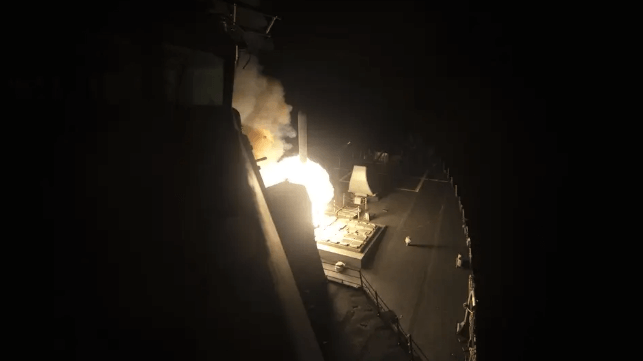White House Seeks to Cancel U.S. Navy's Nuclear Cruise Missile

The Biden administration has released its review of the United States' nuclear posture, including its plans for weapons systems development and decommissioning. As expected, the review finds that there is no need to develop the U.S. Navy's proposed sea-launched nuclear cruise missile (SLCM-N) for attack sub and surface ship deployment.
If developed and fielded, SLCM-N would be able to deliver a low-yield W76 nuclear warhead to targets within theater. It would be the Navy's first nuclear cruise missile since the Tomahawk-based TLAM-N, which was withdrawn from service at the end of the Cold War.
Opponents of SLCM-N have pointed to the $10 billion program cost, as well as the ongoing expense of extra security measures to store nuclear weapons on board conventional DDGs and SSNs. The fleet already has manning, training and funding challenges, and would need to add new duties for warship crewmembers to safeguard nuclear warheads.
It would also add political challenges for port calls and port of refuge requests for nuclear-equipped vessels, especially in damaged condition. Certain allied nations like New Zealand and Japan do not permit nuclear weapons (though quiet approvals have often been granted).
Other considerations include the potential for miscalculation: a typical cruise missile launch from a DDG or SSN might look identical to a nuclear cruise missile launch from the same platform. This would force an adversary to decide quickly whether a nuclear war had begun, and could prompt unwanted reactions.
The long timeline for development and testing would also mean that SLCM-N's initial operational capability would occur in 2035 at the earliest, assuming no delays or schedule slip. This is beyond the window for expected contingencies in the Western Pacific (2022-2027) and Eastern Europe (ongoing).
In its review, the administration noted that SLCM-N's capabilities have strong overlap with existing systems. The same W76 warhead can already be delivered by the SSBN fleet using a nuclear ballistic missile, and a comparable weapon can be dropped by the full range of U.S. strike fighters and bombers (including the stealthy F-22 and F-35). In a recent hearing, Secretary of Defense Lloyd Austin told Congress that “the marginal capability that this [SLCM-N] provides is far outweighed by the cost.”
Instead, the administration aims to put development funds into high-yield, strategic nuclear weapons systems. This includes the ultra-costly Columbia-class nuclear ballistic missile submarines, which will consume an outsize share of the Navy's shipbuilding budget for the next decade; invest in the submarine industrial base, which has contracted over the years; and complete life extension for the Trident II strategic nuclear ballistic missile system.
Many of the Pentagon's top leaders have argued in SLCM-N's favor, since America's near-peer competitors are developing similar weapons. Adm. Charles Richard, head of U.S. Strategic Command, has pushed for SLCM-N's development "as necessary to enhance deterrence and assurance" in an era of competition with Russia and China. Gen. Mark Milley, chairman of the Joint Chiefs of Staff, has also argued that the weapon has a role in deterrence.

that matters most
Get the latest maritime news delivered to your inbox daily.
However, the administration maintains that SLCM-N has no relevance to America's present-day defense, since it would not be delivered for another 13 years.
“Everyone’s voice has been heard. As it applies to the current situation – Russia [and] Ukraine – [it] has zero value because even at the full funding value it would not arrive until 2035,” a senior defense official told USNI.
